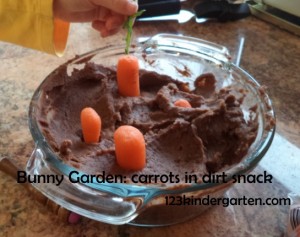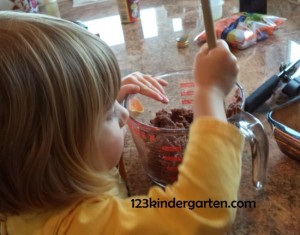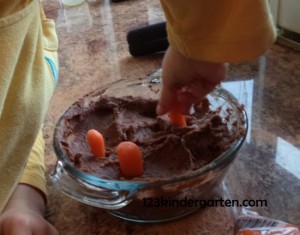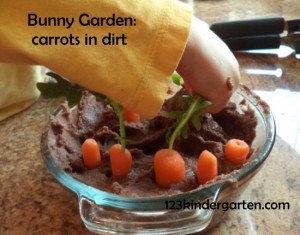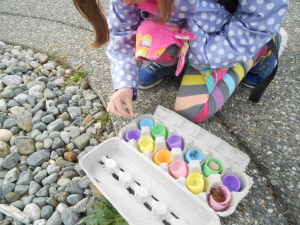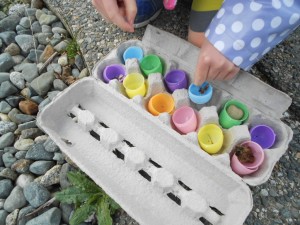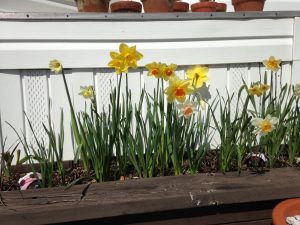A good chunk of our afternoon was in the kitchen, not baking but at the sink with hands in warm water, for some Easter egg float-sink science fun. A winner!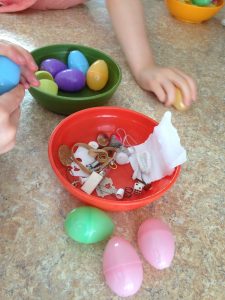
Do you have a junk drawer in the kitchen? We do and this experiment starts with hunting in the stuff for small items that will fit in a plastic Easter egg. We found a glass marble, safety pin, small rock, square bread-bag tag, dice, button, tiny light bulb, screw, twist tie, pipe cleaner, paper clip, and other bits. Before we did anything else, the kids thought about what might float in water and what might sink. They didn’t always agree. Next, we taped over the holes in a dozen plastic Easter eggs so they didn’t let in water.
Once we’d taped the eggs, and talked over what might happen, we put one item in each egg and dropped them in the sink one at a time. After checking to see if an egg would float or sink, we looked inside to see the item.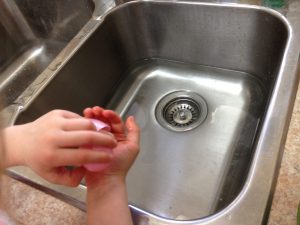
To our astonishment, every single egg floated. Even the ones with the rock and the glass marble. We certainly weren’t expecting that. Big Sister suggested putting both of them in one egg. It still floated. So we tried filling the egg with more items so the two halves would barely click. This time it sunk down a little way but not much.
Little Sister liked this idea of putting in more than one thing so spent the next half an hour by playing by herself and trying the items in different combinations. At one point, standing on the chair at the sink, she sang and hummed, “I’m doing science.” She figured out if she opened an egg and put it in the bottom of the sink to start with, then she could put an item in the egg for sinking.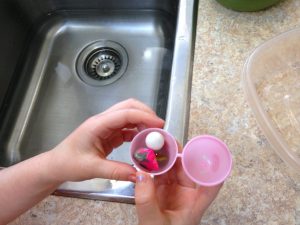
I’m not sure where I saw the idea for this Easter egg float-sink science fun but it was sure a hit, especially with Little Sister. It’s wonderful to see kids direct their own play after we give them an idea. Is there a science-kid at your house who would like to try this for a play-of-the-day?

